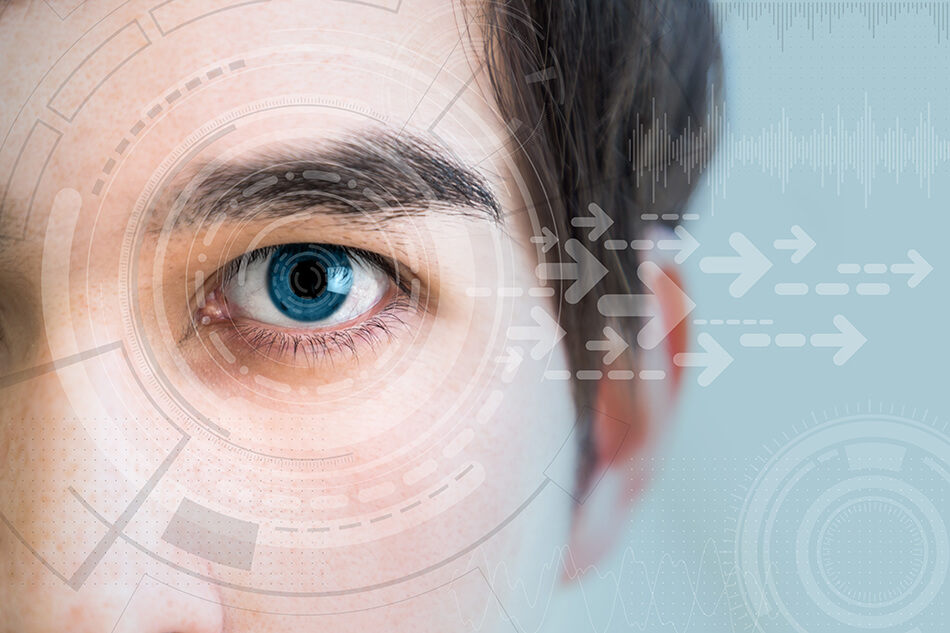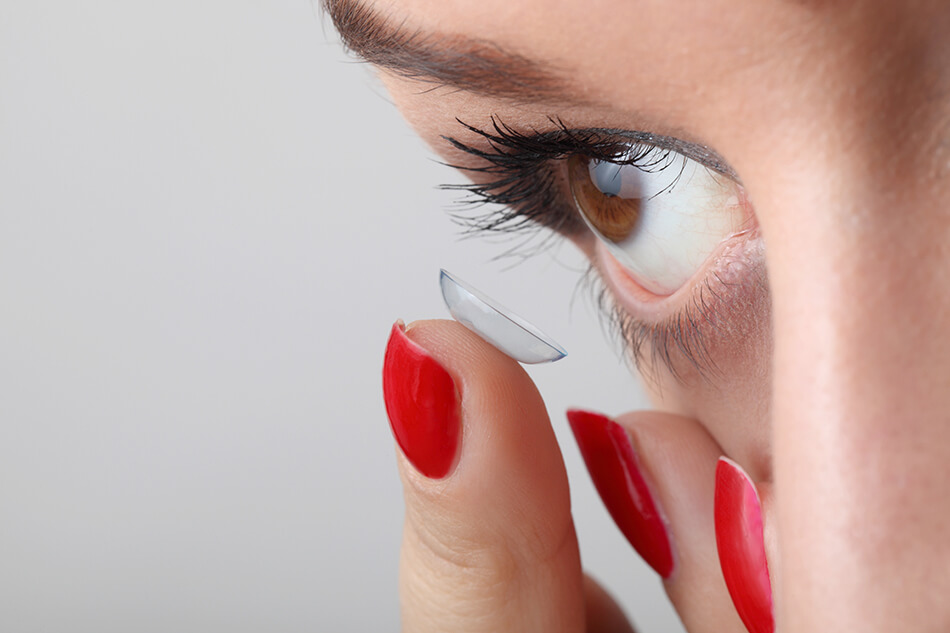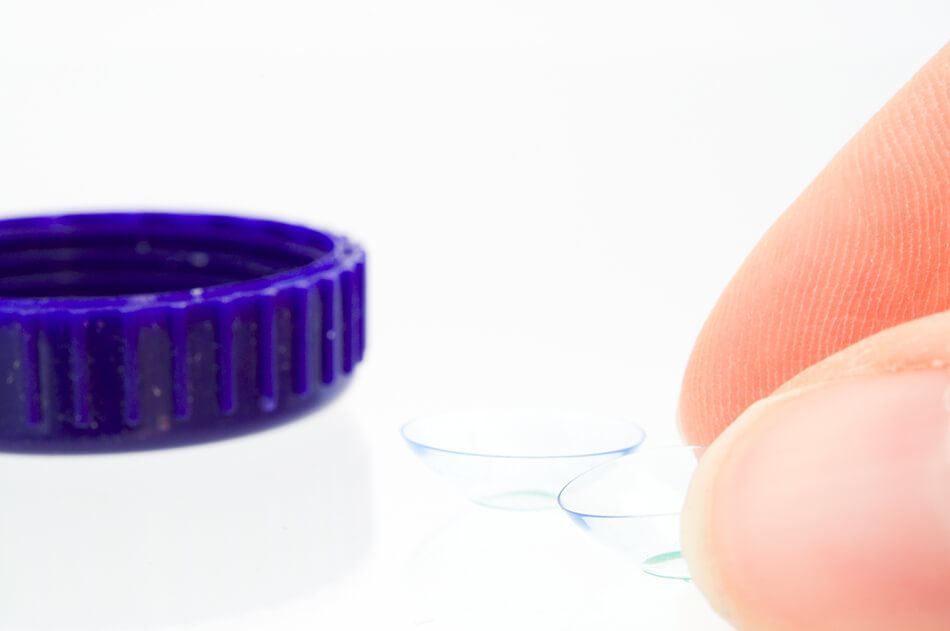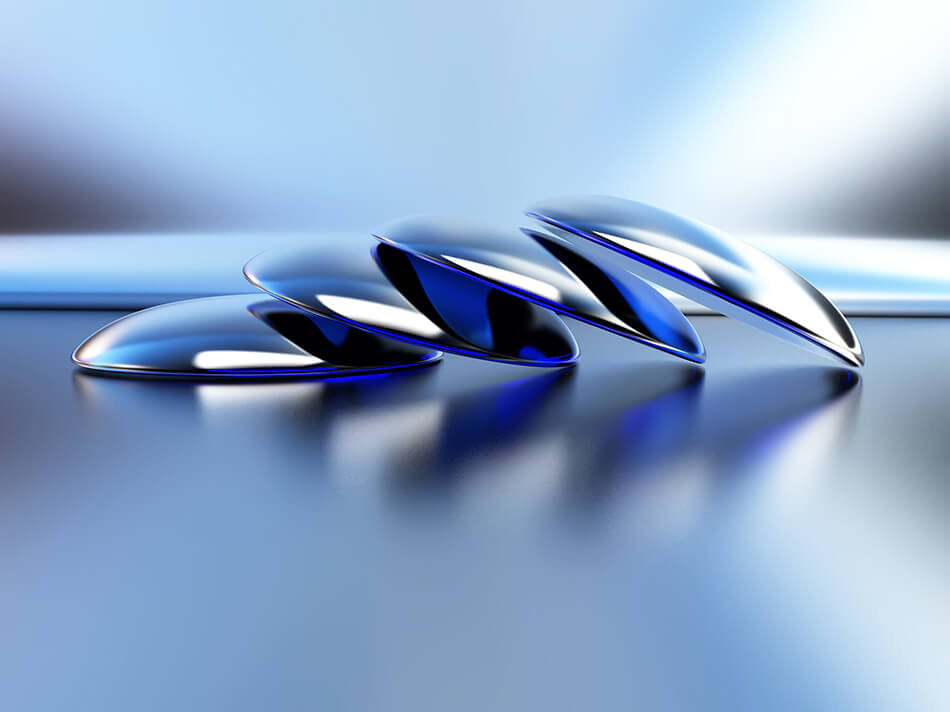So Many Types of Contact Lenses: Which One is Right for You?

Contact lens technology is continually advancing, and as a result, there are many different types of contact lenses on the market today. Given all the choices, the decision to ditch your glasses and find the right contacts might seem quite mind-boggling. However, it’s easy once you divide the options into categories. And, understanding the different materials, prescriptions, and wear times will help you make the right decision!

Soft Contact Lens Materials
When considering types of contact lenses, the first thing to consider is the material. Currently, soft contact lenses are made of one of two types of materials.
Hydrogels
Hydrogel lenses, known as soft lenses, are a water-based gel-like plastic. Because of the material, these contact lenses are very thin and conform to the eye’s surface. Soft lenses are very popular with consumers because they are comfortable. They also take very little adjustment time.
Silicone Hydrogel
These newer lenses are similar to the original hydrogels. However, they are healthier for the eye. This is because more oxygen can get to the cornea during use. Currently, this type of soft lens is the most popular in the United States.
Hard Contact Lens Materials
In addition to soft contacts, there are contacts often referred to as hard contact lenses.

Gas Permeable
Gas permeable lenses (often referred to as GP or RGP) hold their shape. Unlike soft contacts, GP lenses do not bend or fold but they do allow gases like oxygen to pass through for better eye health. Because they hold their shape, these lenses allow for better focus, especially for those with astigmatism. Because of their rigidity, it takes time to get used to wearing GP lenses. Nonetheless, most wearers find them to be quite comfortable after a short adjustment period.
PMMA
PMMA, or polymethyl methacrylate, is a hard plastic used for making the earliest contact lenses as well as other items, such as Plexiglas. Despite allowing wearers to see extremely well, they can be harmful to the cornea because no oxygen goes through the lens. Additionally, many people find it very difficult to get used to wearing them. Very few people still wear PMMA lenses. Those wishing to have the clarity of the PMMA lens are likely to opt for the GP lens.
Hybrid
Hybrid contact lenses use both the rigid materials of the GP lens as well as the silicone hydrogel of the soft contact lens. This is done by using GP materials in the center and the gel materials on the edges. This type of contact lens has yet to become popular in the U.S. because they are more expensive and harder to fit.
Types of Contact Lens Prescriptions
In addition to knowing the materials used for creating contact lenses, you should know the aspects of your vision that the lenses are correcting. Here are the three main types of lenses and which vision issues they correct.

Spherical
Those who are nearsighted and farsighted use spherical lenses. This type of contact lens is the most common.
Toric
Those diagnosed with astigmatism may use a toric lens. Having astigmatism means that your cornea has a different shape. Rather than being round like a ball, the tissue at the front of your eye has a football shape.
Multifocal
For those with presbyopia, a multifocal lens is a good solution. With multifocal lenses, the contact contains several different prescription strengths. This allows the user to see close up and far away.
Wearing Time for Contact Lenses
When it comes to time, consider two things:
- How long you’ll wear your lenses, i.e. hours, days, weeks, and
- How long you’ll use the same lenses before replacing them
Non-disposable Lenses
RGP and PMMA lenses are not disposable. Instead, the user wears them for several hours during the day and cleans and disinfects them each night. These lenses last a long time (up to a year or more) and provide excellent correction for a wide variety of vision problems. But because they last so long, they can lead to eye health issues. The lenses are quite durable, making it easier to adopt bad habits when it comes to cleaning, disinfecting and general contact lense hygiene.
Daily-wear Disposable Lenses
Similar to the non-disposable lenses, users wear these contact lenses for several hours each day and clean them at night. However, at the end of a given period of time, the lenses are thrown away and the wearer starts fresh with a new pair.Typically, this is after one, two, or four weeks. Daily-wear disposable contacts help a majority of vision problems. They are easy to clean and good for the eyes. Nonetheless, some users do not like daily-wear disposables because their vision is not as clear as with other types of contact lenses.
Extended-wear Disposable Lenses
Extended-wear disposable lenses are similar to daily wear disposables. However, rather than wearing the contacts for several hours at a time, the user wears the contacts continuously, day and night, for a given period of time. Some extended-wear disposables last for 30 days. The greatest benefit of extended-wear disposables is that there is no cleaning required. However, as with other disposable contact lenses, some people have found their vision may not be as sharp as they expected. Additionally, people who have a more difficult prescription may not be able to wear these lenses.
Daily Disposable Lenses
Wearers throw away their daily disposable lenses after wearing them for several hours each day.Because there is no cleaning and storing, there is little chance of eye infections. As with all disposable contacts, vision correction may not be as sharp as with non-disposable lenses.

Daily Contact Lenses vs Glasses
After looking at all the options, you may find that it’s time to ditch your glasses and get daily disposable contacts. (Though don’t get rid of your glasses completely. You’ll still want to wear them sometimes!)
People enjoy wearing daily contact lenses instead of their glasses for many reasons, including:
- Better field of vision: Without the frames of your glasses in the way, it is easier to see. Contacts also eliminate any distortions experienced with glasses.
- Easier to live life: Unlike glasses, contacts do not get rain spots or fingerprint smudges. They also don’t slide down your nose, get fogged up when you come in from the cold, or fall off when you bend over! You’re free to do the things you love without the issues of wearing glasses.
- Sports: Playing sports with glasses can be a hassle. Wearing contacts allows you to play sports without worrying about breaking, bending, or losing your glasses.
- Sunglasses: When contact lenses correct your vision, you can buy the current sunglass styles in any store. You’re not limited to prescription sunglasses.
- Looks: Although glasses are very common, and a fashion accessory, some people prefer the way they look without glasses. Contacts allow your face to be fully seen.
There are many different types of contact lenses to choose from. Talk with your eye care professional about the best one for your prescription, eye health, and lifestyle. A short discussion can help you determine which type of contact lens is right for you.